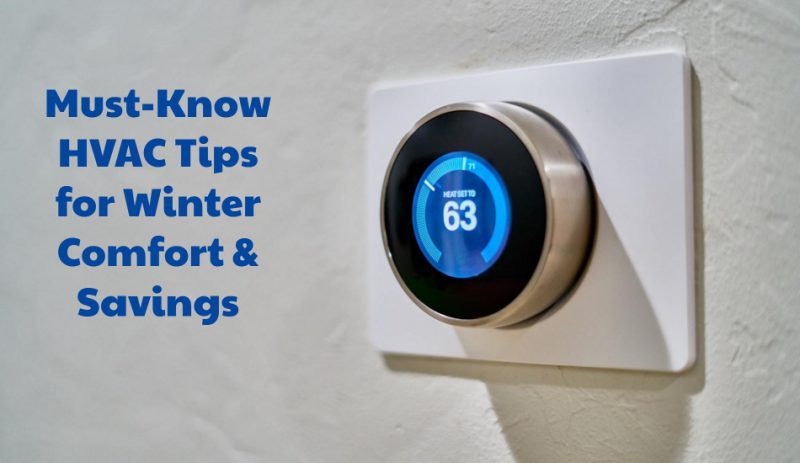As the temperatures outside continue to drop, most homeowners are firing up their furnaces and hunkering down indoors. But be warned: if you’ve neglected your heating and cooling systems for too long, your home might not be nearly as comfortable as it could. Some HVAC experts estimate that up to 75% of no-heat calls they receive during winter can be attributed to a lack of maintenance. To ensure your family stays cozy this winter (and to ensure you can keep utility costs down), you’ll want to prioritize those pivotal maintenance tasks.
 HVAC Maintenance Tips for Comfort and Savings
HVAC Maintenance Tips for Comfort and Savings
Clogged filters, vents, and pipes are often to blame for poor air quality and ongoing HVAC problems. You might not realize it, but contaminants and pollutants are pulled into your HVAC system and re-circulated throughout your home anywhere from five to seven times per day. The air filter on your furnace is especially prone to build-up. This can prevent air flow and cause your furnace to work overtime, which means its components might need to be replaced sooner than would otherwise be necessary.
Fortunately, changing air filters is relatively simple. You should change your furnace’s air filter at least once per season. But if you have pets or experience allergies or other respiratory issues, aim to change it every 30 to 60 days. Otherwise, your air quality could suffer significantly, which could cause you to join the 27% of U.S. patients who visit an urgent care center within a two-year span. If you don’t feel comfortable cleaning your furnace or changing its filters on your own, you should contact your HVAC professional to do. And if it’s been a while since you had your HVAC system inspected at all, you’ll want to schedule an appointment sooner rather than later.
You’ll also want to make sure that your HVAC supply vents and return vents are both unblocked. Supply vents are the ones that deliver the warmed air throughout your home, while the supply vents pull air from the home to deliver to the furnace. Both need to be free of obstructions to ensure your furnace works efficiently. Since heating and cooling already make up 54% of the average home’s yearly utility bills, it’s essential that you streamline those operations to save money and to save your equipment from a premature breakdown. And if your area experiences a heavy snowfall, you’ll also want to check your exterior foundation surface vents. Any vent (e.g., dryer vents, gas and electric meters, etc.) that’s clogged with snow and ice could become damaged, present a fire hazard, or even cause a carbon monoxide build-up. Basically, you’ll want to clear out anything that doesn’t belong.
Your ductwork, chimney, and pipes need to be attended to, as well. Many newer homes have PVC pipes instead of chimneys, which may be more efficient but are also more prone to blockages. Those clogged exhaust pipes can lead to furnace breakdowns and carbon monoxide build-up too, so you should have these pipes checked on a regular basis to ensure they’re clear. Ductwork can also become clogged with dust, pet dander, and even mold, which can inhibit air flow and decrease air quality. You’ll need to go with the professionals on this one, but it’s a cost that’s often well worth it. Even if it’s an added expense, you’ll probably end up saving more in the long term if your furnace is working at its best.
There’s no time like the present to perform these tasks and to schedule a professional assessment. If you don’t, your energy bills will continue to increase and you may even find yourself in a freezing home when the next storm hits.

 HVAC Maintenance Tips for Comfort and Savings
HVAC Maintenance Tips for Comfort and Savings

Great tips! I’d love to have an assessment and see where we could be saving more on our energy bill!
Really great article, Glad to read the article. It is very informative for us. Thanks for posting. – it staffing company in bangalore, staff providing agency in bangalore
Great Info!